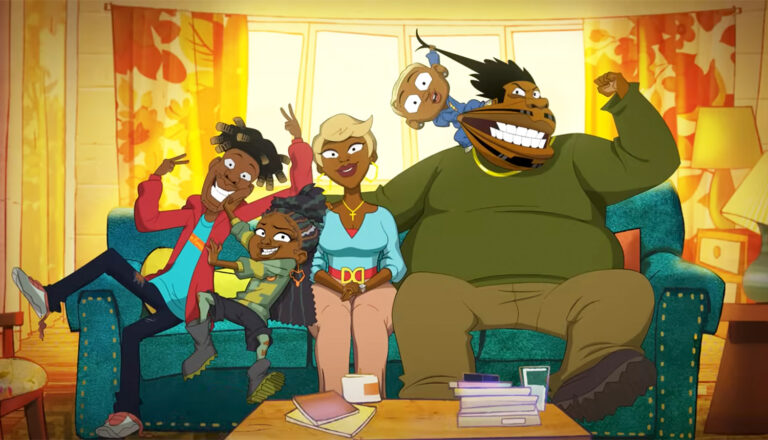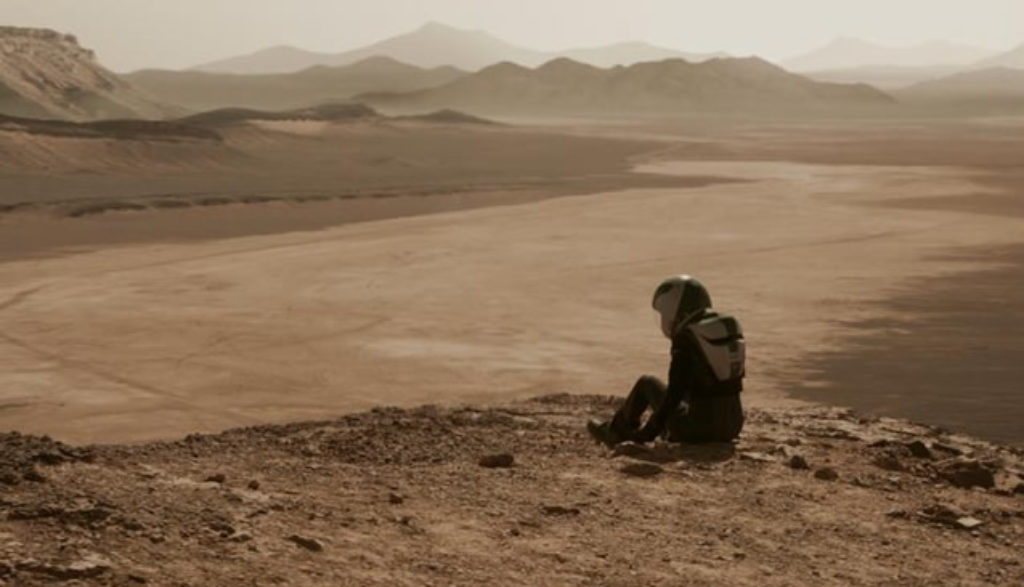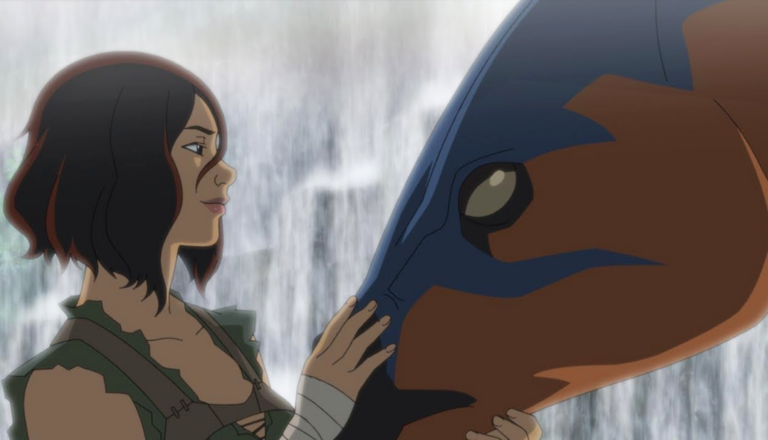
Good Times
Netflix takes a classic sitcom, Good Times, and turns it into a vulgar, violent, sexually-charged TV-MA show.

Lots of shows try to make you feel like you’re in a different world. And fictional tho’ they may be, they make those worlds seem as real as they can.
The backstabbing in House of Cards seems so real you can almost feel the bite of the blade in your shoulder. Breaking Bad gives you the sensation of being a chemistry teacher-turned-meth maker. Game of Thrones ushers you into the simultaneously detailed but disturbed realm of George R.R. Martin’s brain.
These shows may indeed feel realistic—even if they have no real clue regarding how these worlds truly operate. But in NatGeo’s Mars, you get the sense that the folks behind this well-researched show know exactly what they’re talking about.
This series, now in its second season, is an unusual hybrid of drama and documentary. And, in Season 2, the focus of both aspects of the show is the same: The inherent tensions between preservation and development when it comes to establishing a permanent base on the Red Planet.
In the show’s dramatized, not-so-distant-future, Hana Seung helms a now-stable Martian colony, sponsored by an international organization called the IMSF. The colony’s goals are twofold: to search for new life in this strange, red world. And, ultimately, to change the planet itself—”terraforming” it to support and sustain organic life (imported from Earth, of course) on its own. (And given the challenges back on terra firma circa 2042, a new outpost for humanity elsewhere might not be such bad idea.)
But Hana’s colony has some company now. A private firm called Lukrum has come to play. Seek out new life? Pish. Glory in the planet’s desolate beauty? Save it for the campfire singalongs, says Lukrum leader Kurt Hurrelle. Lukrum is on Mars for just one thing: profit. And the planet, teeming with natural resources, could be a boon for the company’s bottom line.
Clearly, the IMSF and Lukrum don’t have a ton in common. But when you’re living on a planet where the nearest McDonald’s is 34 million miles away, you’re going to have to work together to some extent.
Or will they?
Every so often, Mars yanks us away from this fictional drama and brings us back to present-day Earth. It takes us to offshore drilling platforms located in some of the harshest conditions on the planet and introduces us to the engineers who make those place hum—and the environmentalists who would like to make them stop. It follows scientists, activists and regular ol’ Joes and Janes around, giving us inklings on what motivates them—and hints about what sorts of people might want to inhabit NatGeo’s fictional tale.
Mars doesn’t just offer its viewers a sci-fi story. It caters to those who want to know what it’d really be like to live on the planet next door’s surface—what they might do, where they might go and the real-life challenges they might encounter.
But on a planet as rugged as Mars, sometimes what they encounter can be a little dangerous.
Give props to NatGeo for creating a story that takes its science seriously and still entertains those looking for a gripping sci-fi show. The characters we meet, from Hana and her crew to the IMSF bureaucrats on earth to Lukram’s more rough-and-ready miners, are nicely drawn and well-acted.
And while the show focuses most of its energy on its high-minded scientists (making the entrepreneurial folks at Lukrum antagonists by default), both its drama and its documentary asides seem more philosophically balanced than some might expect. There’s an acknowledgment that civilization has always been dependent, to some extent, on industry, even as the show also recognizes the danger of losing something important when greed drives innovation.
“All colonies throughout human history have faced the tension between the development of a new society and preservation,” says Lucianne Walkowicz, the chair of astrobiology for the Library of Congress. “On Mars those tensions [would be] absolutely, exponentially bigger.”
Discerning viewers may feel a little tension of their own. Mars doesn’t just focus on scientists and industrialists doing their jobs: Many of them engage in romantic relationships, some of them sexual. Characters kiss and sometimes cuddle in bed, and at least one will deal with an unintended Martian pregnancy this season.
Given the planet’s hostile environs, we shouldn’t be surprised that people sometimes die, too. Some who don’t die also sidle up to the local bar (yep, IMSF has a lounge), knock down a drink or three and maybe even throw a few punches. And sometimes, they add a little blue language to the Red Planet, too.
We should also note that religion rarely plays a role in the activities on Mars, and the characters’ overwhelmingly scientific worldviews might challenge the core beliefs of some religious viewers. (Scientists, for instance, have already found life on the planet, and the theory of evolution is often invoked.)
But those cautions aside, NatGeo does try to keep Mars within a relatively family-friendly solar system, if not exactly in Plugged In’s orbit. This show is about thought, not shock, and that’s not something we can always say.
It’s 2042, and the IMSF colony “welcomes” some next-door neighbors to Mars—a cadre of company men and women from the industrial giant Lukram. The reception from IMSF is a bit mixed. Engineer Robert says that Lukram’s here for, essentially, the same reasons they are: “To pave way for migration.” Scientist Marta disagrees. “They’re here to steal natural resources and make a profit, just like they do all over Earth,” she says. “There’s a difference.”
Meanwhile, two IMSF workers are doing some “reconnaissance” of their own. They’re a long-standing couple, and they’re shown in bed together, kissing and apparently naked (though we don’t see anything critical). The interlude ends, though, when one (Amelie, the facility’s doctor) announces that she’s going home.
Someone’s arm is smashed in an accident: We see blood and apparently part of a man’s bone exposed. When Lukram’s craft lands, debris flies everywhere—nearly hitting some IMSF folks standing nearby. (“Let’s just say they made quite an entrance,” commander Hana reports later.) We hear characters say “p-ss” and “h—.”


Paul Asay has been part of the Plugged In staff since 2007, watching and reviewing roughly 15 quintillion movies and television shows. He’s written for a number of other publications, too, including Time, The Washington Post and Christianity Today. The author of several books, Paul loves to find spirituality in unexpected places, including popular entertainment, and he loves all things superhero. His vices include James Bond films, Mountain Dew and terrible B-grade movies. He’s married, has two children and a neurotic dog, runs marathons on occasion and hopes to someday own his own tuxedo. Feel free to follow him on Twitter @AsayPaul.

Netflix takes a classic sitcom, Good Times, and turns it into a vulgar, violent, sexually-charged TV-MA show.

While its protagonist might live a nuanced life, The Sympathizer’s problematic content can’t be described the same way.

Say hola once again to the iconic explorer in this faithful reboot of the children’s series.

Based on a popular video game, Ark: The Animated Series features hungry dinosaurs, bloodthirsty people and plenty of problems.